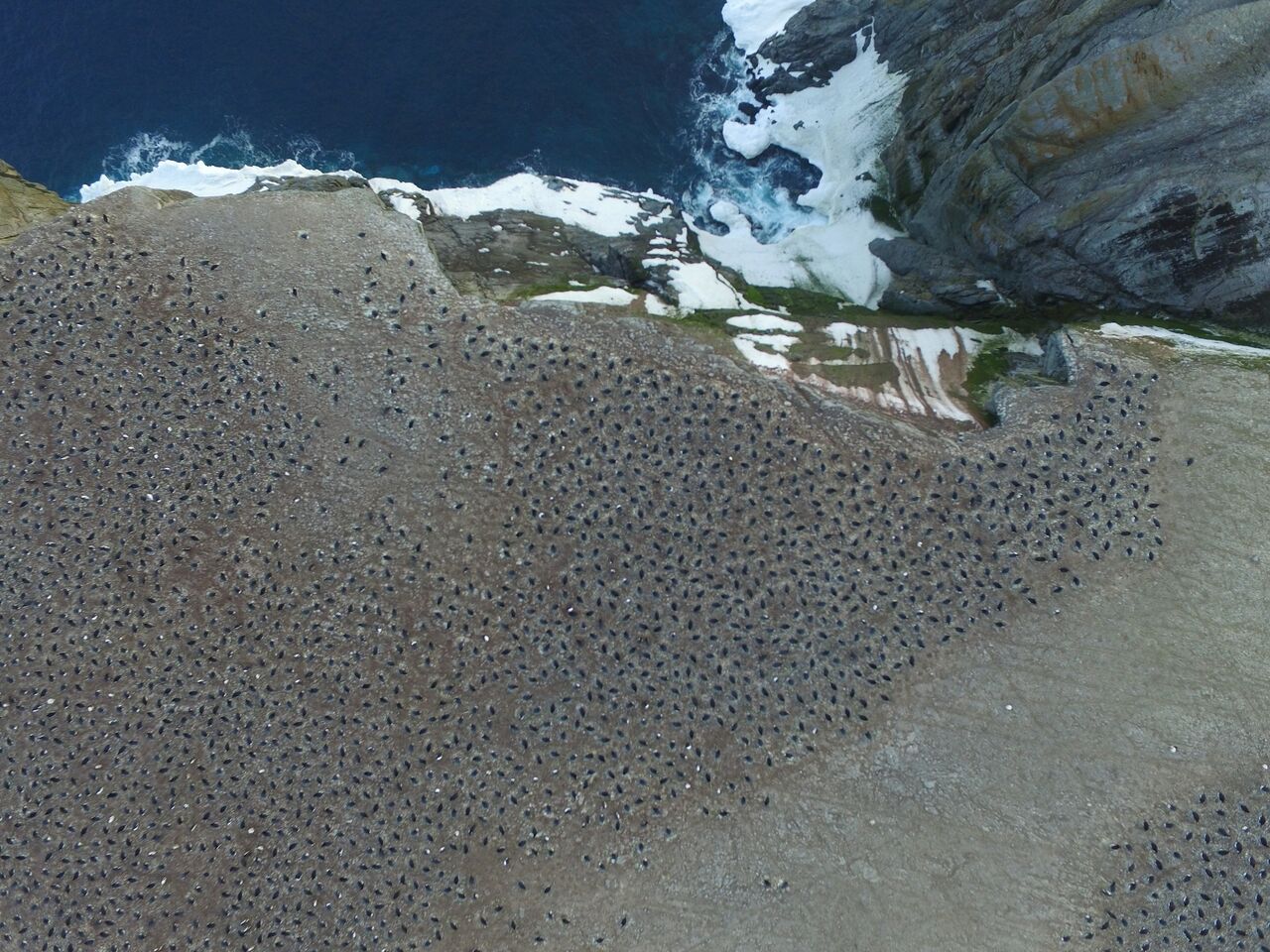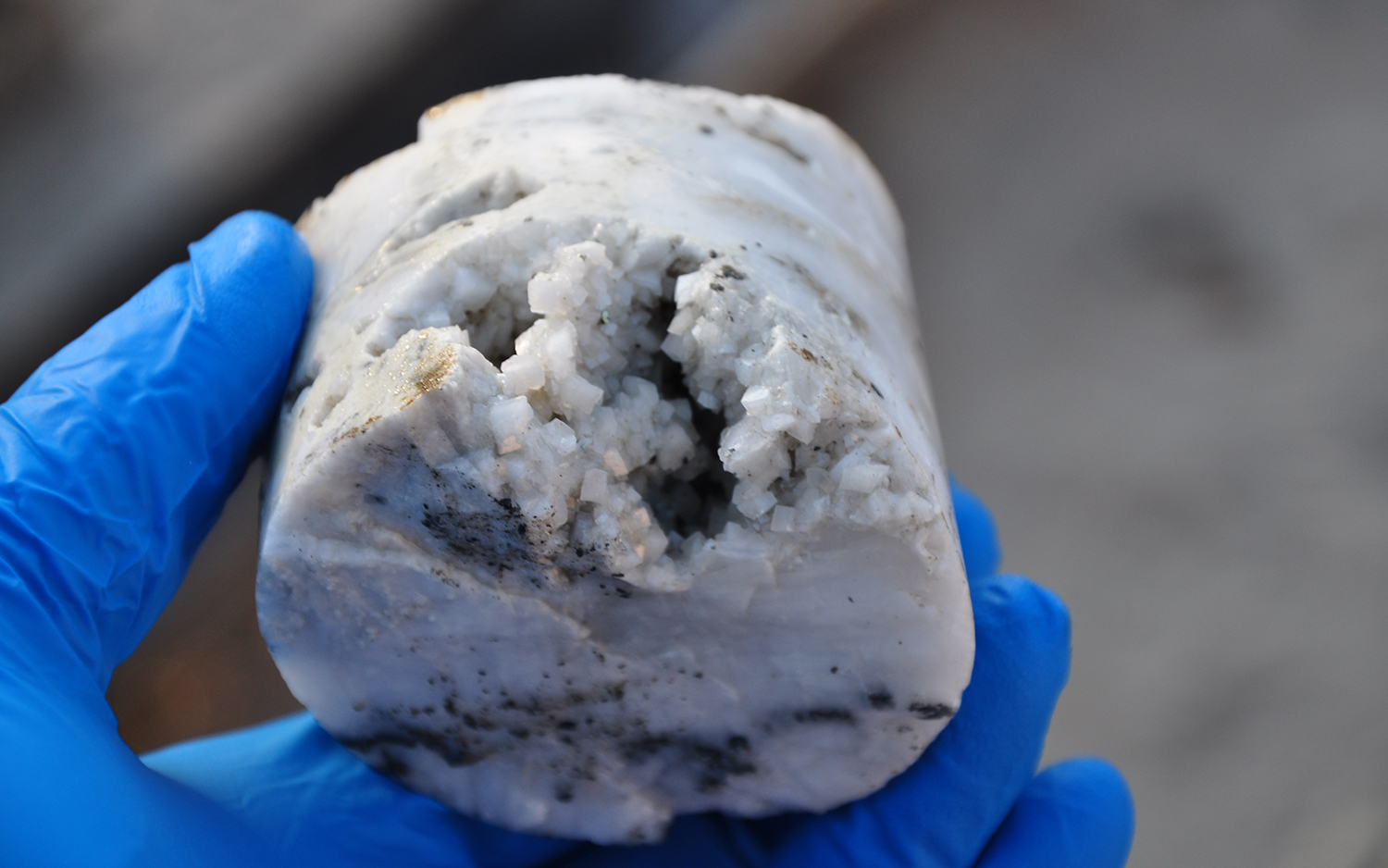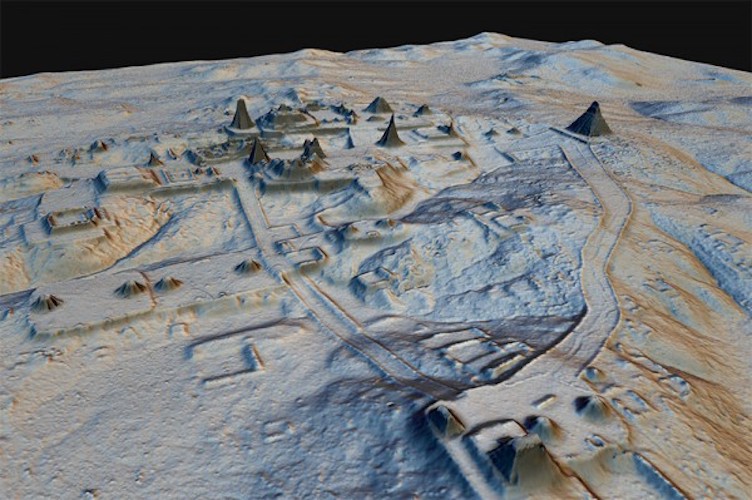10 Times Science Proved the World is Amazing in 2018
An Enchanted World

Our world is enchanted — and if you need proof, just turn to science. We've collected 10 of our favorite awe-inspiring science stories to remind you just how amazing the world really is. From the 1.5 million penguins that we didn't know existed until recently to the mysterious "sky glow" named "Steve." From the microbes that can't live without light but thrive in complete darkness deep in the water to the massive throne of diamonds that shimmer from hundreds of miles below us.
The world is amazing, see for yourself.
Steve, the non-aurora

Meet Steve, the non-aurora. For decades, a ribbon of purple light danced across Northern Canada's skies. But though the glowing phenomenon was a familiar sight to locals, skywatchers didn't actually give it a name until 2016, when they named it…"Steve."
Weirder still, it wasn't until this year that scientists figured out what Steve was — or in this case, wasn't. Namely: Steve is not an aurora, according to a paper published in August in the journal Geophysical Research Letters. Steve is slimmer and longer in the sky, and perhaps more important, while auroras are made up of characteristic charged particles in the Earth's atmosphere… Steve isn't.
So, what's a scientist to do? Keep studying. And also, keep the name — the phenomenon, now dubbed a "sky glow," still goes by Steve, or "Strong Thermal Emission Velocity Enhancement." [Read more about STEVE]
Penguins of Danger Islands

Sometimes we miss one or two things, sometimes we miss millions. In this case, we're talking penguins.
This year, scientists found about 1.5 million Adélie penguins waddling around on the rocks of Antarctica's Danger Islands. The elusive penguins' location was given away by their poop: Scientists became aware of the large population of penguins in the area after spotting penguin poop stains on the ice in NASA satellite images. Motivated by their finding, the scientists embarked on an expedition to the Danger Islands in 2015, where, sure enough, they happened upon a great number of the birds. According to a study published in March in the journal Scientific Reports, the researchers set about tallying the penguins using a mix of hand counting, drone footage and a neural-net-counting program. They estimate that more than 1.5 million penguins — a "supercolony" — live on the rocks. The discovery came both as a surprise and a delight, as populations of Adélie penguins in other parts of Antarctica have been declining for the past 40 years under pressure from climate change.
Get the world’s most fascinating discoveries delivered straight to your inbox.
Those penguins have lived on the islands, undetected, for at least 2,800 years, according to new unpublished research revealed at the American Geophysical Union meeting in Washington, D.C. on Dec. 11. Though their numbers are in the millions, these inhabitants may also be on the decline, the researchers said. [Read more about the penguins]
An impossible Particle

Physics tries to make sense of the world — sometimes the world laughs back. This year, scientists came up with the strongest-ever evidence that sterile neutrinos, particles that can make their way through matter without so much as an interaction, exist. The existence of sterile neutrinos was first suggested in the 1990s, when a neutrino detector in New Mexico, reported more neutrinos than the Standard Model of physics could explain. (The Standard Model of physics is how we currently define the universe and everything in it.) Since then, however, all other experiments, done in various laboratories across the world, couldn't find any evidence of this elusive particle.
Until this year, when an experiment at the Fermi National Accelerator Laboratory near Chicago detected more neutrino particles than should exist.
So, does it exist? Well…we don't know. But if it does, scientists are going to have to redefine the universe. [Read more about this elusive particle]
A quadrillion ton of diamonds

Ninety to 150 miles beneath Earth's surface, there may exist a treasure trove of diamonds — a quadrillion tons of the glittering gems, in fact, or about a thousand times more than was previously thought. Scientists can't actually see these diamonds, but they think they exist because of how seismic waves — the vibrations from earthquakes and tsunamis — behave when they hit different rocks below the surface. But because researchers can't actually access these diamonds through the layers of earth to study them, they instead used computers and created "virtual rocks" that each contained a different ratio of different kinds of material, including diamond. Then, the scientists compared how fast seismic waves would travel through these imaginary composites with how fast they travel through the rocks of the underworld, and found the best matches with those rocks containing diamonds. [Read more about the endless diamonds]
Mysterious new DNA

The recipe that crafts a life and gives it a spice of personality is, for the most part, folded into a twisted ladder form known as the double-helix. But DNA doesn't always assume this well-known form. Scientists learned this year, for example, that sometimes our genetic code can fold into less common forms. One of these rarer structures is a four-stranded knot called an "i-motif." However, whether this structure could actually be found in human bodies has been controversial, because i-motifs love acidic environments, way more than what was thought our cells could provide.
But a study published this year in the journal Nature Chemistry provided the first direct evidence that this weird knot of DNA can, and probably does, exist in the human body. What's more, it's likely found in every one of our cells.
In ab dishes, scientists used antibodies to find and bind to these knots of DNA in human cells, and light up when they found one. But when the team looked at the antibodies, they were surprised to see them twinkling on and off, meaning that the DNA was continuously folding into i-motifs and then unfolding. Though researchers don't know why these weird knots exist, they mostly folded into existence during transcription — when DNA is translated into RNA — so they think the i-motifs have something to do with the process of expressing genes. [Read more about i-motifs]
Microbes in the dark

Deep beneath the Earth's surface, where sunlight doesn't penetrate, live some microbes that were thought to be dependent on sunlight to survive. Yet somehow, in this darkness, they're thriving.
The microbes in question, called cyanobacteria, have been around for billions of years, and were key players in creating the oxygen-rich environment necessary to kick-start all forms of life. But the way they did that — and the way most most cyanobacteria function nowadays — is by creating energy through photosynthesis, a process that uses sunlight to to turn carbon dioxide into food, releasing oxygen along the way.
Cyanobacteria are therefore typically found in places with at least some sunlight. But this year's discovery of cyanobacteria in the so-called dark biosphere, 2,011 feet (613 meters) below the water's surface where sunlight is scarce, if not nonexistent, challenged this notion. Scientists suggested that these microbes didn't use photosynthesis but rather survived by absorbing hydrogen gas, combining that with oxygen in their bodies, then releasing hydrogen electrons back into the dark waters: the first evidence that cyanobacteria can adapt to and thrive in a dark world. [Read more about these microbes]
Underwater highway

Deep in the Tasman Sea, east of the island of Tasmania, there's a hidden highway brimming with sea life. This year, while on an expedition to study phytoplankton and its ability to sustain life in ocean ecosystems, researchers discovered a chain of underwater volcanoes 3 miles below the surface of the water. These volcanoes likely formed thousands of years ago and were made up of both low plateaus and high peaks — a unique signature that today may serve as "signposts" for migrating whales. And indeed, while the scientists were surveying the seamounts, they were greeted by dozens of curious humpback and long-finned pilot whales, navigating the underwater world. The submerged mountain range contained more than migrating whales; according to the researchers, it was also teeming with phytoplankton and above it flew many different kinds of seabirds, making it"undoubtedly" a biological hotspot. [Read more about this underwater highway]
Hidden civilization

Buried deep beneath a Guatemalan jungle lies the remains of an ancient Mayan civilization. Researchers spotted these remains using "light detection and ranging," or "lidar," technology that maps out features on the Earth's surface. This technology can help distinguish between natural and man-made structures and even between different kinds of man-made structures. The traces of ancient life hidden below the trees was both urban and rural, consisting of farmland, houses, palaces, ceremonial centers, roads, irrigation canals, reservoirs and pyramids. The lidar images revealed that much of it was heavily modified for farming with 368 square miles (952 square km) of farmland and 140 square miles (362 square km) of terraces and other altered agricultural land. All this modified land was needed, they said, to sustain up to 11 million people that likely lived there from A.D. 650 to 800. [Read more about this hidden civilization]
Largest wave

A video straight out of a nightmare — or, if you're a surfer, a dream — circulated around Twitter back in August. It shows a gigantic wall of water, and a tiny dot of a person riding it toward its breaking point. This wave, which rose 80 feet (24 meters) above the water's surface off the coast of Nazaré, Portugal, is thought to be the largest ever surfed by a person. The brave soul that broke the world record was a Brazilian surfer named Rodrigo Koxa. The tall wave that helped him was a result of "amplifying" features of the Nazaré shoreline — an upward sloping underwater terrain as you approach the shore and an underwater canyon with high walls that sits about 16,000 feet (nearly 4,900 m) below the ocean's surface. This brave feat actually happened in 2017, but a video of it went viral on Twitter on this year. [Read more about this wave]
Frozen worms

During the Pleistocene, some soil-dwelling microscopic worms froze when the temperature got cold. Then, 42,000 years later, in 2018, they thawed, woke up, and began to eat. (We don't blame them.) The worms were found in samples of Siberian permafrost that very precisely preserved these tiny, 1 millimeter multicellular animals. When scientists defrosted the samples, he microscopic creatures began wriggling around and eating. This is the first time that multicellular animals were naturally cryopreserved, but not the first time that any (potentially?) living entity was. Another group of scientists had previously found a giant virus — which affects only amoebas — that was defrosted after a 30,000-year slumber, again in Siberian permafrost. (We can get into whether viruses are alive another time.) [Read more about these frozen worms]

Yasemin is a staff writer at Live Science, covering health, neuroscience and biology. Her work has appeared in Scientific American, Science and the San Jose Mercury News. She has a bachelor's degree in biomedical engineering from the University of Connecticut and a graduate certificate in science communication from the University of California, Santa Cruz.


